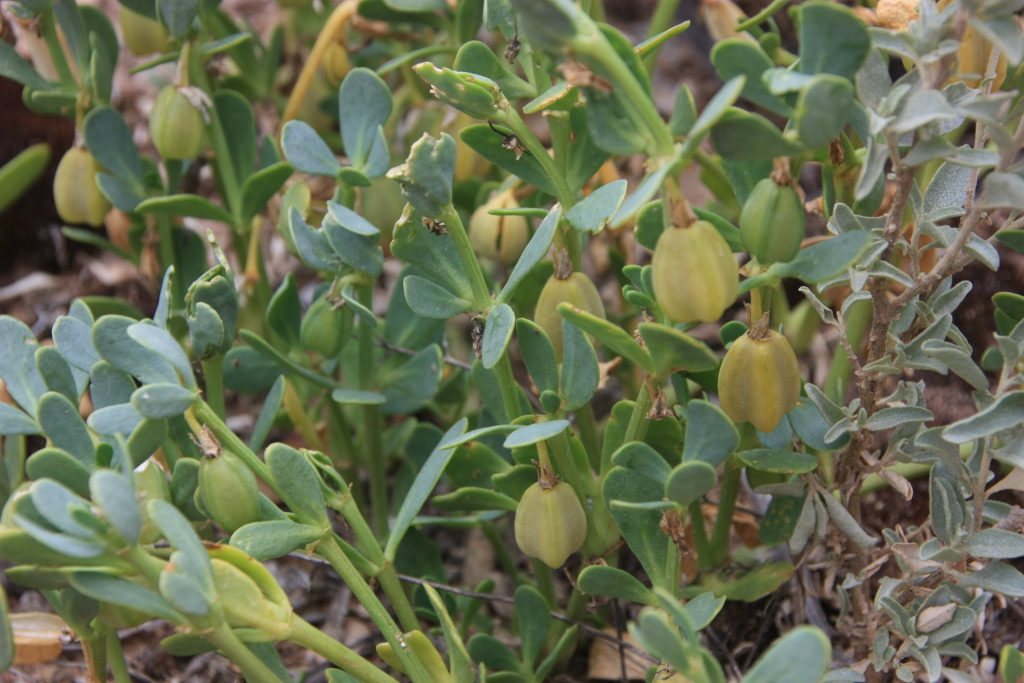Roepera glauca
(F.Muell.) Beier & Thulin Pale TwinleafErect or ascending annual herb or perennial subshrub to c. 20 cm high; stems stout, often forming a mat up to 2 m diam. Leaves 15–50(–60) mm long, glaucous or green; leaflets articulate at base, oblique-obovate, 10–40(–50) mm long, 3–22(–26) mm wide, fleshy, apex rounded; common petiole narrow. Sepals 4, ovate-lanceolate, 5–8 mm long, spreading in fruit; petals 4, obovate, 8–15 mm long, apex truncate to emarginate, bright yellow; stamens 8, filaments broadly winged in lower half, wings fringed at apex. Fruiting pedicels 5–8 mm long; fruit a 4-angled loculicidal capsule, ovoid-oblong to obovoid-oblong, 14–20 mm long, drooping, rounded at apex or rarely rather truncate, with a short apical point; seeds 3–5 per cell. Flowers May–Dec.
LoM, MuM, Wim, VVP, VRiv, MSB, RobP, MuF, GipP, OtP, Gold, CVU, GGr, NIS. All mainland states, ?Tas. Apart from a few isolated sites near Melbourne (Long Forest near Bacchus Marsh, Jacksons Creek between Diggers Rest and Keilor), confined in Victoria to the north-west where widespread and sometimes locally common. Grows predominantly in mallee, often on gypseous sands.
Specimens with more or less campanulate fruit with tapering sides and obliquely truncate apices have been collected in Victoria. These plants may require recognition at some taxonomic level.
Jeanes, J.A. (1999). Zygophyllaceae. In: Walsh, N.G.; Entwisle, T.J., Flora of Victoria Vol. 4, Cornaceae to Asteraceae, pp. 198–207. Inkata Press, Melbourne.
 Spinning
Spinning


